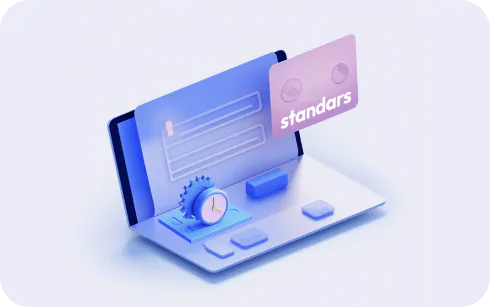
Effizienzsteigerung
AI-Gestützte Agenten erledigen Aufgaben viel schneller als Menschen und verbessern so die Produktivität aller Geschäftsprozesse.

AI-Powered Agents are advanced forms of intelligent technology, designed to not only mimic human activities but also adapt, learn, and make decisions within digital ecosystems. These agents go beyond traditional automation, seamlessly navigating systems to perform tasks such as extracting customer information from databases, generating invoices, and managing unstructured data with precision. With the ability to interpret on-screen data, execute complex workflows, and adjust to evolving processes, RPAs bring unparalleled adaptability and intelligence to digital operations. They empower businesses by combining automation with decision-making, ensuring greater efficiency, accuracy, and resilience in handling even the most intricate tasks.
AI-Powered Agents offer a revolutionary way to streamline business operations. These agents go beyond simply improving efficiency and accuracy—they actively enhance workflows by handling complex tasks and responding to dynamic business needs.


AI-Gestützte Agenten erledigen Aufgaben viel schneller als Menschen und verbessern so die Produktivität aller Geschäftsprozesse.

Durch die Eliminierung des menschlichen Faktors minimieren AI-Gestützte Agenten die Fehlerwahrscheinlichkeit erheblich und führen so zu einer höheren Datengenauigkeit.

Die Automatisierung wiederkehrender Aufgaben entlastet Ihre Mitarbeiter, senkt Personalkosten und steigert die Mitarbeiterzufriedenheit.

AI-Agenten können kontinuierlich und ohne Pausen arbeiten und sorgen so für ununterbrochene Produktivität und schnelle Durchlaufzeiten.

Unsere Agenten befolgen strikt definierte Regeln und Protokolle und gewährleisten so die absolute Einhaltung von Vorschriften und Standards.

AI-Gestützte Agenten können problemlos nach oben oder unten skaliert werden, um sich ändernden Geschäftsanforderungen gerecht zu werden, und bieten so betriebliche Flexibilität.












AI-Powered Agents are transforming industries and workplaces with their adaptability and intelligence. In the finance sector, they handle tasks like loan processing, fraud detection, and compliance reporting. In healthcare, they streamline patient record management, appointment scheduling, and billing. Manufacturing benefits from RPAs in inventory management and supply chain optimization, while the hospitality industry uses them to enhance reservation systems, guest services, and event planning. In IT, RPAs manage system maintenance and generate reports efficiently. Even the public sector relies on these agents to simplify data management, application processing, and administrative workflows, highlighting their wide-ranging and ever-growing potential.
















Robotic Process Automation (RPA) greatly benefits from advancements in Artificial Intelligence (AI). While RPA is excellent at following rules-based processes, AI provides the capability for RPA bots to learn, adapt, and make decisions, enhancing their functionality. AI-powered cognitive capabilities like Natural Language Processing (NLP), Machine Learning (ML), and Computer Vision enable bots to understand and respond to text or voice commands, learn from historical data, and recognize images, respectively. For instance, in customer service, AI-powered RPA can analyze customer sentiments in real-time, allowing bots to handle customer complaints and queries more effectively, delivering personalized responses and improving overall customer experience.
